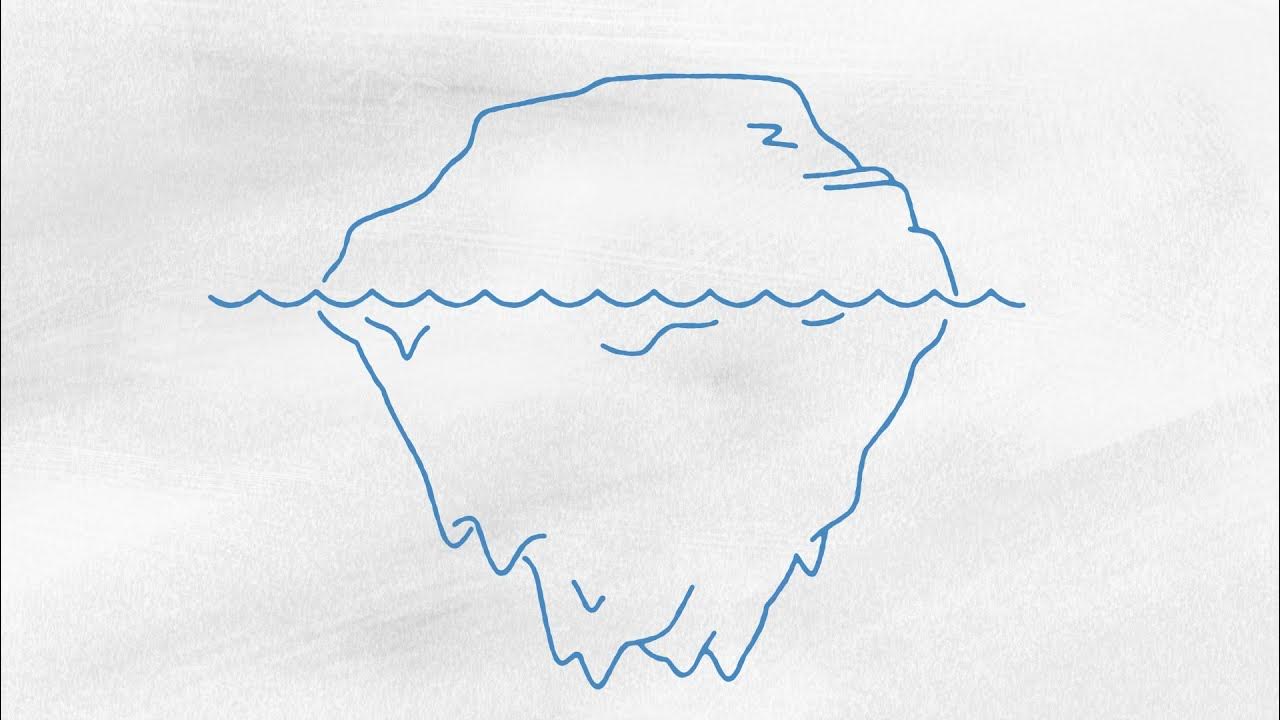The Cultural Iceberg
Summary
TLDRThis script uses the iceberg metaphor to explore the visible and hidden aspects of culture. It highlights observable elements like language, art, and customs, contrasting them with deeper, less tangible elements such as beliefs, values, and emotions. The importance of delving beneath the surface for a true understanding of a culture is emphasized, along with the influence of external factors like geography and technology on cultural development.
Takeaways
- 🧊 The Iceberg Metaphor: Cultures, like icebergs, have a visible portion and a much larger, hidden part that is not easily observed.
- 🌐 Surface Observations: Easily noticeable cultural aspects include language, art, traditions, religion, food, dress, institutions, and manners.
- 🗣️ Language as a Link: Language serves as a fundamental part of culture, connecting the observable and unobservable elements.
- 💭 Unseen Beliefs: Beneath the surface, cultures are shaped by beliefs, ideals, norms, roles, and concepts that are not immediately apparent.
- 🌟 American Dream Example: The American Dream illustrates the ideals of a culture, reflecting values like hard work and social responsibility.
- 👥 Social Norms: Norms are the expected behaviors that societies deem as normal, influencing how individuals act within a culture.
- 🎭 Role Diversity: Individuals take on various roles throughout their lives, influenced by factors such as gender, ethnicity, and economic status.
- 💡 Conceptual Understanding: Cultures encompass a wide range of concepts, from the importance of family to abstract ideas about innovation and time.
- 📚 Myths and Meta Truths: Myths in culture are more than just stories; they convey deeper, meta truths that are vital to cultural identity.
- 🎨 Art and Emotions: Since language cannot fully express deep cultural emotions and feelings, art serves as a medium to explore and understand these aspects.
- 🏆 Core Values: Cultures are defined by their core values, which are the feelings attached to the most important aspects of life, such as friendship and honesty.
- 🤔 Assumptions and Attitudes: Assumptions are made daily and shape attitudes, which can significantly impact how individuals react to situations.
- 🍽️ Tastes and Preferences: Tastes in culture refer to the likes and dislikes of individuals, which can vary widely across different aspects of life.
- 🌍 External Influences: Cultures are influenced by external factors such as climate, geography, demographics, communication, economics, and technological innovation.
Q & A
What is the primary analogy used in the script to describe culture?
-The primary analogy used in the script to describe culture is an iceberg, emphasizing that most of a culture's significant aspects are hidden beneath the surface, much like the majority of an iceberg is underwater.
How much of the iceberg (culture) can be observed directly?
-Only about 10 to 15 percent of the iceberg (culture) can be observed directly, with the majority remaining unseen but known to exist.
What are the aspects of culture that can be easily observed and experienced?
-The easily observable and experienced aspects of culture include language, art forms such as music, dance, cinema, painting, sculpture, theater, and architecture, traditions, customs, rituals, religions, food, and people's attire.
What is the role of language in the iceberg analogy of culture?
-Language is a fundamental part of culture and serves as the link between the visible and the hidden parts of the iceberg. It is observable and audible, and it is also the medium through which deeper cultural aspects are expressed and understood.
What are the five examples given to represent the deeper, hidden aspects of culture?
-The five examples given to represent the deeper, hidden aspects of culture are beliefs, ideals, norms, roles, and concepts.
How are beliefs different from the religion mentioned in the script?
-Beliefs refer to the fundamental belief systems of a culture that influence views on education, science, history, politics, and other institutions, whereas religion is an institution that can be experienced and observed above the surface of the iceberg.
What does the script suggest as an example of a cultural ideal?
-The script suggests the American Dream as an example of a cultural ideal, which is a compelling idea about working hard, taking social responsibility to achieve financial, political, and social freedom for the individual and the family.
What are norms in the context of culture as described in the script?
-Norms in the context of culture are the behaviors and actions considered by the society as normal and not unusual, shaping the expected conduct of individuals within the culture.
What roles do individuals take on in society according to the script?
-Individuals take on many different roles in society, such as being a son, husband, father, or grandfather, and these roles are part of their identity and are influenced by factors like gender, ethnicity, economic status, job or career, and personality.
What are myths in the context of culture, and how do they differ from the common modern understanding of the term?
-In the context of culture, myths are very old stories that may not be physically true but contain a meta truth, which is vital to reality on a level beyond descriptive factual language. This differs from the common modern understanding of myths as stories that are probably not true.
How does the script describe the relationship between the visible and hidden parts of the cultural iceberg?
-The script describes the relationship between the visible and hidden parts of the cultural iceberg as interconnected, with the visible parts being behaviors and practices, and the hidden parts being thoughts and feelings that are more difficult to identify and understand.
What external factors influence culture according to the script?
-External factors that influence culture according to the script include climate, geography, demographics, communication, economics, and the rate of technological advances.
Outlines

此内容仅限付费用户访问。 请升级后访问。
立即升级Mindmap

此内容仅限付费用户访问。 请升级后访问。
立即升级Keywords

此内容仅限付费用户访问。 请升级后访问。
立即升级Highlights

此内容仅限付费用户访问。 请升级后访问。
立即升级Transcripts

此内容仅限付费用户访问。 请升级后访问。
立即升级5.0 / 5 (0 votes)






